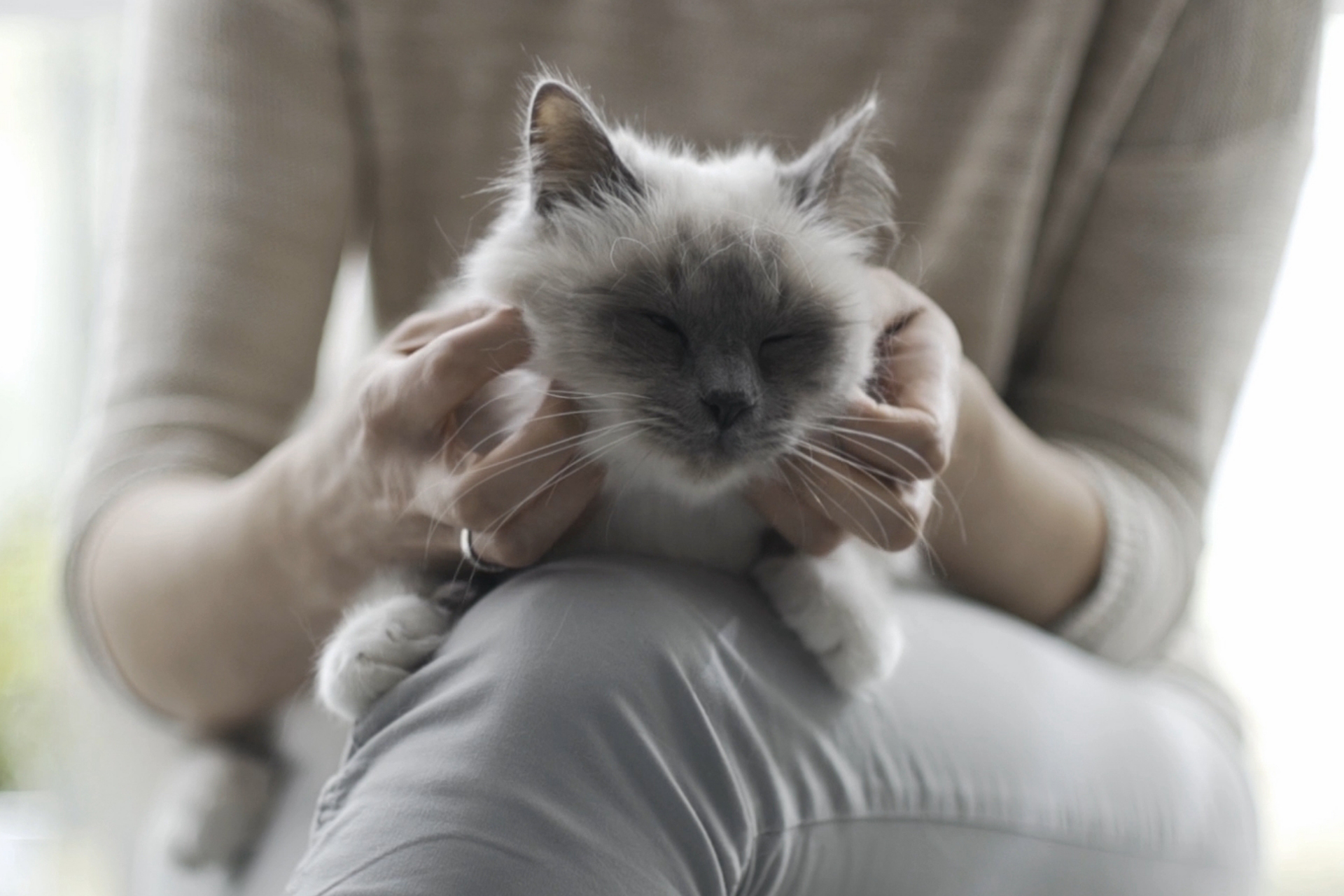Lick 'n' Lap™
Snack
Chicken Flavor & Salmon Flavor
Available in Single or Multipack


Our feline friends can be great at hiding their affection, but that doesn’t mean they don’t care about us. In fact, research in the United States shows that cats forge deep emotional relationships with their caregivers, just like dogs and children do . Although they can appear indifferent (and sometimes downright weirded out) in our presence, our little tigers really want to get close to us… and, if you’re bringing a new cat home for the first time, it’s important that you give them every opportunity to love and trust you.
By learning how to bond with your cat, you’ll ensure they get a safe, positive experience right from the start, and lay the foundations for an amazing relationship. In this post, we’ll give you all the tips and advice you need to create when bringing a new cat home, so you build that special bond and make your new cat feel as comfortable as possible.

If you really want to know how to bond with your new cat, make sure you first understand their body language. Cats and kittens are often very vocal and will meow when they’re stressed or hungry. However, the way they move their heads and bodies may speak louder than meows ever could.
If our kitties are happy to see us, they’ll often approach us with their tail up, pointing at the top. If they’re relaxed, they’re likely to have their ears relaxed and forward and their eyes may be only half-open. And if they want to rub themselves on you, that’s a bit like claiming ownership: they love you so much that they want to rub their scent all over you to keep everyone else away!
There are other, more negative signs to look out for, however. If their back is arched, their ears are flattened downwards or rotating frequently, or their eyes are wide, these can all be signs of a stressed kitty. And they’re likely to be rigid, wary of getting too close to you.
One final note on this. If your cat shows you their belly (or their butt!) it’s a sign that they’re comfortable around you and happy to show their vulnerability . It’s not usually an excuse to stroke. If you try to stroke their belly while they’re lying there in a state of blissful nirvana, you may get a bite or claw for your troubles… and it may weaken their trust in you.
In fact, stroking is an essential part of bonding with your cat, as we’ll show you in the section below.

In addition to your cat’s weight and body shape, it’s important to monitor them regularly and look for clues in their appearance and demeanour. Regular check-ups at the vet are essential, but you can do much of the detective work yourself once you know what to look for.
Stroke them properly
Right from the start, you should aim to pet your cat regularly, in a way that they’ll find safe and reassuring. Some cats are suckers for attention and aren’t fussy about how you touch them. However many cats prefer to be petted in a specific way - this is especially important for new kitten care, as kittens can be particularly sensitive.
First off, let your cat come to you. When your cat is nearby, hold your hand out: if they want some fuss, they’ll probably rub themselves against your hand . If they don’t come towards you, don’t force the issue.
Cats often enjoy being stroked around their face, specifically at the base of their ears, around their cheeks or under their chin . These areas house their facial scent glands, and so it probably feels nice when they receive physical contact.
If your cat is happy being touched in these areas, you can gradually move to their back and sides. But make sure you avoid the paws, tails and underbelly - cats often get stressed when you touch these parts of their body.
To make things as reassuring as possible, use strokes that are long and gentle rather than short and jabby . And try using one finger at first - this may be gentler and more accessible for the cat.

Grooming doesn’t just keep your cat looking nice and glossy; it serves to remove dirt, spread essential oils round the body and get rid of hairballs . Most healthy cats will take charge of their own beauty regime, and their barbed tongue is the perfect tool for the job.
But if you give your kitty a helping hand now and again, they’ll be seriously grateful (particularly long-haired cats, whose hair is more prone to matting). Cats groom one another as a sign of affection, so you’re showing your little furbaby that you really care about them.
To provide the best possible grooming, make sure you use a special comb for cats (short-haired kitties need a fine-toothed metal comb). And it’s important you follow the same basic rules as you use for stroking: let your cat sniff the brush first, start with their head before moving along their body and use long, gentle brushstrokes rather than short, firm ones . If you find a clump of hair, don’t try to yank or rip it out.
Above all, remember to let your cat take control. If they’re not enjoying the attention, don’t force them to endure the grooming.

A nice bit of playtime won’t just help your cat burn energy; it will strengthen your bond and reinforce your cat’s positive impression of you.
We recommend scheduling regular playtime and investing in simple interactive toys like kitty wands, laser lights or balls filled with catnip. You can dangle these in front of your cat and encourage them to leap and catch, sharpening their natural instincts. Make sure you move the toy nice and slowly, giving your kitten plenty of time to pounce (and imitating the way their prey would move in the wild).
But whether you’re playing or petting, allow your cat to set the boundaries. If they’re backing away, moving frequently or trying to wriggle free, let them go. You won’t gain anything by forcing them to endure contact.

Hand-held treats are a great way to win your cat’s affection, get them comfortable around your hands and reinforce your association as a dependable, trustworthy caregiver.
It’s important to make these treats as healthy as possible: in fact the best cat treats will take up no more than 10% of your kitten’s total calorie intake . And as mentioned in a previous post, they should be high in protein and low in fat and carbohydrates. Cats depend on meat for their essential nutrition, and they have evolved to eat high-protein foods like chicken and tuna.
You can find a variety of handheld options, including mini-bites (you can hold these on trays rather than your hand if you prefer), sticks your cat can lick or nibble, or squeezable tubes. This last option is great for providing liquid treats, which may be more accessible for some young kittens than solid food.
If you want some ideas to get started, we’ve got loads of great treat options, including Lick n’ Lap, a creamy treat which comes in a lovely liquid format and is packed with Omega 3 acids, and Purrsticks, treat sticks which are packed full of meaty goodness.

Squeeze this creamy, low-calorie treat right from the tube onto your cat’s tongue and watch your cat lick 'n' lap it all up!

Cats love the size, texture and high meat content of these soft and tasty, double-meaty treats!

High meat content (>70%), small batch production and premium ingredients combine to make these truly irresistible.

Tender chicken fillet pieces in a thick and creamy stew! Great for older cats!